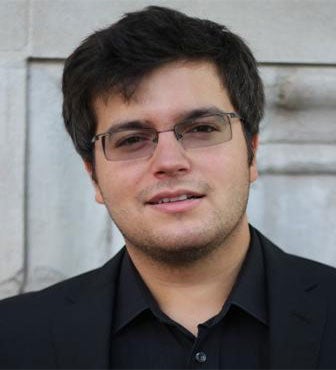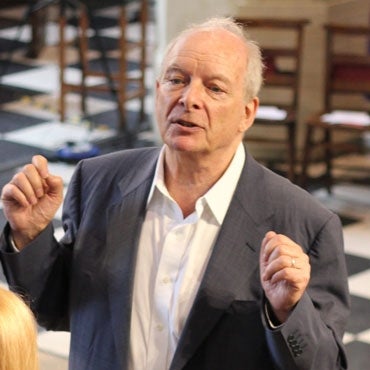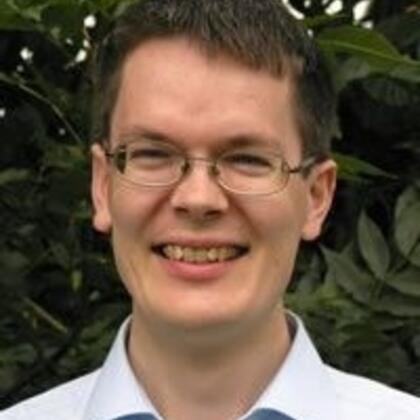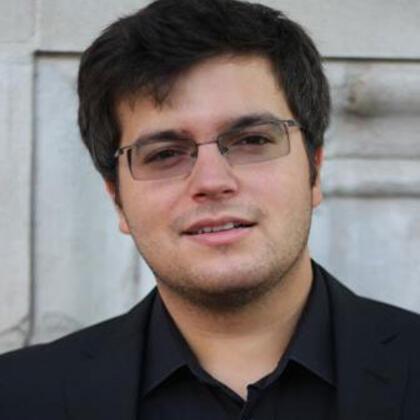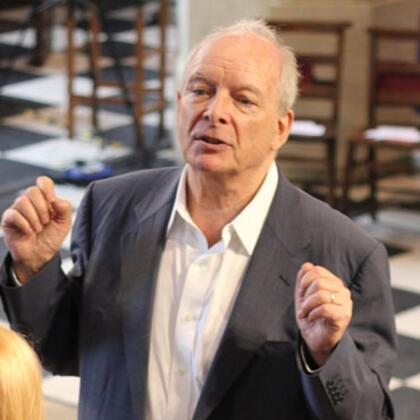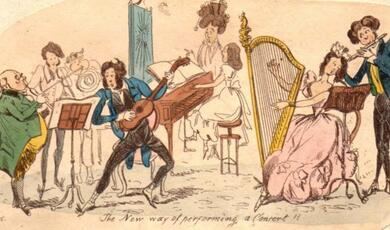Music in Context: In the Teaching Studio
Share
- Details
- Transcript
- Audio
- Downloads
- Extra Reading
Professor Stephen Rose in conversation with Florian Mitrea (piano).
This event will include live musical performances of pieces by Bach, Mozart, Chopin, Liszt and Bartók which were created for teaching and study.
Due to unforeseen circumstances the lecture was delivered by Dr Stephen Rose.
Please note that a number of photographs taken at this event are available to be viewed on the Gresham College Flickr page.
Download Transcript
12 December 2013 Music in Context: In the Teaching Studio Dr Stephen Rose Keyboard music in the teaching studio Throughout history, professional musicians have worked as teachers. Teaching has been an essential way to earn income – whether teaching children, adult amateurs, or the next generation of professional musicians. Today we will look at keyboard music from across two centuries – from Bach in 1720s to Bartok in the 1930s – to understand how composers wrote music for the teaching studio, often for lessons they gave themselves. We need to realise that much keyboard music would not have survived for posterity were it not for teaching. Until the end of the eighteenth century, most keyboard music was improvised. Some keyboardists refused to write down their improvisations, because they did not want to disclose the secrets of their art. There was a stereotype of the secretive, jealous keyboardist. However, when keyboardists had pupils, they would normally write down samples of their improvisations as examples for their pupils. Many of Bach’s keyboard works, for instance, were written down specifically for his pupils, as inspirational examples of what they could improvise; and the manuscripts were then copied and recopied by his pupils and their own pupils. We must thank the practices of the teaching studio for the survival of much of Bach’s keyboard music. In this lecture we will see how composers across the generations have approached the challenge of writing pedagogical keyboard pieces. One frequent characteristic of these pieces is that they are graded – you start with easy pieces, then progress to much harder ones. Another characteristic of these teaching studio pieces is that they incorporate specific aspects of keyboard technique. Those aspects of technique have changed over the centuries – from the use of figuration that fits under the hand (Bach), to arpeggios / scales that span the whole keyboard (Chopin / Liszt), to awareness of the rhythmic patterns of different ethnic styles (Bartók). The aim of keyboard education has changed, from teaching the unequal strength of each finger in the age of Bach, to feats of dexterity in which each finger is equal. Bach as teacher In early 18th century, JS Bach taught a succession of keyboard pupils; his sons, schoolboys in Leipzig and adolescent musicians from other parts of Germany. Almost all his pupils were male, apart from his second wife and possibly some of his daughters. Most of his pupils learned the harpsichord and organ as these were instruments used by directors of music, where the aim was to play continuo, to direct from keyboard, rather than becoming a virtuoso soloist. Within this apprenticeship system, the pupil would live with Bach and absorbed his routine. This was described in a letter by one of his first pupils, Philipp David Kräuter: “He is an excellent and sterling man, both in composition and in instruction on keyboard and other instruments. It is assuredly six hours per day of guidance that I am receiving, primarily in composition and on the keyboard, at times also on other instruments. The rest of the time I use by myself for practice and copying, since he shares with me all the music I ask for. I am also at liberty to look through all of his pieces”. [Philipp David Kräuter, pupil with Bach at Weimar, 1712 (New Bach Reader, p.318)] Bach had a full-time job as an organist, so he was not giving Kräuter six hours of teaching. Instead Kräuter was probably shadowing Bach throughout the day, learning by observing him. Kräuter commended Bach for sharing ‘all the music I ask for’ – a contrast with those secretive keyboardists I mentioned earlier. Bach was also famed for his unusual approach to keyboard technique: “The first thing he did was to teach his [keyboard] pupils his peculiar modes of touching the instrument… For this purpose he made them practice, for months on end, nothing but isolated exercises for all the fingers of both hands, with constant regard to this clear and clean touch.” [Johann Nikolaus Forkel 1802 (New Bach Reader, p.453)] Since he himself had composed the most instructive pieces for the keyboard, he brought up his pupils on them. [CPE Bach 1775 (New Bach Reader, p.399)] Today we will focus on two of Bach’s Inventions – parts of the Clavierbüchlein, written for his son WF Bach in the early 1720s, when WF Bach was about ten years old. This keyboard book is graded from easy to hard, starting with a table of ornaments and basic pieces, moving to the Inventions and Sinfonias. The Inventions, according to the title page, were intended to teach a ‘singing style’ in performance and give a foretaste of composition – in other words, they showed how logical counterpoint could be created by a composer, and then gave the performer practice at moulding several contrapuntal voices simultaneously. At the same time, they use little keyboard figures that fit under the hands nicely; the hands were not expected to span wide ranges of the keyboard. Mozart - Pedagogical use of his keyboard sonatas Mozart wrote pieces for teaching some fifty years after Bach. In contrast to Bach, Mozart’s pieces were probably used in the drawing room of houses of aristocrats, in order to teach young ladies how to play. In the 1770s Mozart was teaching Rosa Cannabich (the daughter of Kapellmeister of Mannheim) for whom he wrote his Piano Sonata K309 as a teaching aid. In a letter of 1777 he described his interesting take on teaching her: ‘I have told her that if I were her regular teacher, I would lock up all her music, cover the keys with a handkerchief, and make her practise, first with the right hand and then with the left, nothing but passages, trills and mordents and so forth, very slowly at first, until each hand should be thoroughly trained’ [Mozart, letter dated 14 Nov 1777] It will be noted, again in contrast to Bach, that Mozart’s pupils were female. In Vienna in the 1780s his pupils were almost entirely female, interestingly varying in their social status. Pupils like Countess Rumbeke, Barbara von Ployer and Josepha Auernhammer during this period ranged from the aristocratic to the slightly lower social status. It was during this period that Mozart composed the Sonata in C major K545. The manuscript of this sonata is dated 26 June 1788 and it is described in his thematic catalogue as ‘for beginners’ (Für Anfänger). However, Mozart’s estimation of the ability of “beginners” was evidently rather high as even just the opening bars of the first movement have many serious challenges for the pianist. In bars 1-4, the right hand must project a singing melody over the figuration of an Alberti bass in the left hand. Then in bars 5-8, the right hand has to play nimble semiquaver scales; from bar 13, the left hand has an oscillating figure that should sound unobtrusive; and in bar 18 both hands have arpeggios. All these technical challenges are linked together by a musical thread of impeccable harmonic logic. Carl Czerny Carl Czerny was a hugely significant figure in the history of piano pedagogy. He was a pupil of Beethoven and the teacher of many nineteenth-century pianists including Liszt. He chose to spend his career not as a travelling virtuoso but as a teacher and composer. He did this with great enthusiasm, as he claimed that between 1815 and 1836 he gave twelve lessons a day, 8 a.m. to 8 p.m. Unlike 100 years earlier, when compositions remained in manuscript accessible only to a narrow circle of pupils, Czerny composed and publically published over 100 studies and exercises in around 1800. In these pieces, Czerny offers a systematic exploration of technical problems, with the ultimate aim of giving dexterity across the entire compass of the keyboard. In his pieces it is clear that virtuosity – the power of the hands and the endurance to maintain it – becomes as important as character of different keys. Just as the industrial era that was then beginning used technological developments to revolutionise manufacturing, Czerny’s etudes take a systematic approach to improve the technique of pianists. Frederic Chopin We now reach two nineteenth century piano virtuosos: Chopin and Liszt. In the 1830s, Chopin made much of his income from teaching in Paris. Etudes are an important part of his output. Here, unlike Czerny, the technical study also makes a serious musical and artistic statement, making it suitable for use in the concert hall. Indeed, Chopin’s Etudes are the first such pieces to retain a firm place in the concert repertory. Op.25, written in 1835–37, contains twelve short but effective pieces, each addressing one technical problem. No. 12 is the climax to the set, utilising arpeggios in both hands, and a chorale-like melody that emerges through the broken-chord figuration. Although the piece can be used to great effect for study, it is suitable for only the most advanced of pianists. Liszt Liszt was another virtuoso pianist and one whose compositions are often inspired by, or arrangements of, famous musical themes (e.g. Bach). In 1832 he heard the virtuoso violinist Paganini and soon incorporated many of Paganini’s virtuoso themes into keyboard music. He wrote his Paganini Etudes in the 1830s, revising them in the 1840s. These are much longer etudes than Chopin’s, and each addresses several technical challenges. They are physically demanding and call for the full involvement of the arm in playing. In fact, they are arguably more virtuosic than Paganini’s originals. The second study is based on Paganini’s Capriccio No. 17 in E flat major. Bartók Composers in the twentieth century also wrote keyboard music for teaching purposes. One good example is Bela Bartók, who taught piano at Budapest Academy of Music 1907-1934. Although he regarded teaching as less desirable work than his vocation of composing or collecting folk songs, he put lots of energy into it. In the 1910s he wrote the keyboard collection For Children, which contained arrangements of Hungarian folksongs. Here, in an era of rising nationalism, his educational aim was to teach the ethnic musical style of the Hungarian people. Following on from this, in the 1930s he completed Mikrokosmos, six books of graded piano music. The early volumes were written for Bartók’s son Peter (born 1924). Interestingly, Bartók took Peter out of school music lessons, believing he would get better tuition from his composer father. The title Mikrokosmos has a dual meaning: a musical world in miniature [microcosm]; and a musical world for young/small pianists. Conclusion Across the centuries, the need to teach pupils – whether aspiring professionals, children or amateurs – has been a constant stimulus for keyboard composers. The technical challenges have changed over the years – from separate contrapuntal lines in Bach or Mozart, to virtuosic scales, octaves and arpeggios in Chopin and Liszt, to ethnic styles and rhythmic precision in Bartók. I hope that you can see these are not dry technical exercises, nor that they should necessarily be restricted to pedagogical use, but instead they are a worthy concert repertory and a fascinating chapter in the history of music. © Dr Stephen Rose, 2013
Part of:
This event was on Thu, 12 Dec 2013
Support Gresham
Gresham College has offered an outstanding education to the public free of charge for over 400 years. Today, Gresham plays an important role in fostering a love of learning and a greater understanding of ourselves and the world around us. Your donation will help to widen our reach and to broaden our audience, allowing more people to benefit from a high-quality education from some of the brightest minds.


 Login
Login

